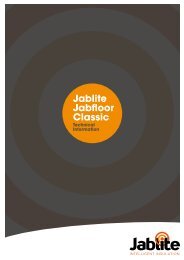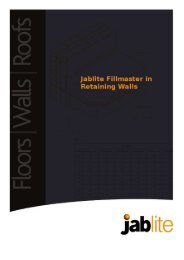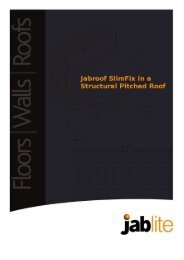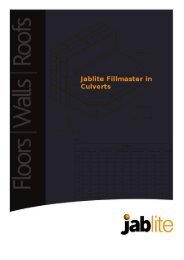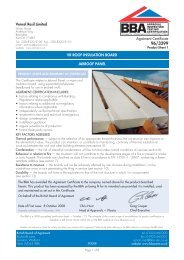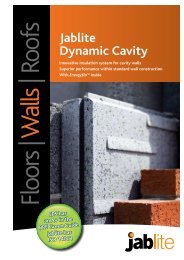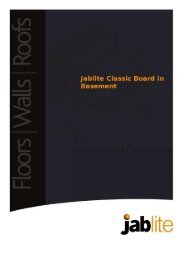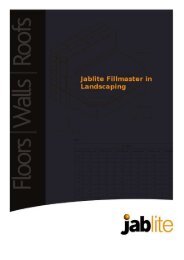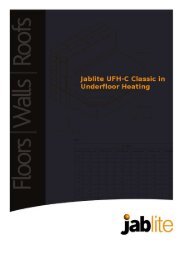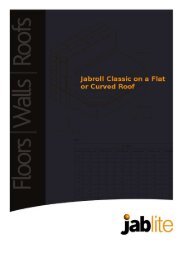Clay Heave Protection - Jablite
Clay Heave Protection - Jablite
Clay Heave Protection - Jablite
- No tags were found...
You also want an ePaper? Increase the reach of your titles
YUMPU automatically turns print PDFs into web optimized ePapers that Google loves.
<strong>Jablite</strong> <strong>Clay</strong>master Compression CurveTransmitted Pressure (P or W) kN/m²40302010010 20 30Compressive Strain C (%)40 50 %<strong>Clay</strong>master thicknessCompressed thicknessat load P or WSpecifiedthickness T (mm)T = 100H+10CPredicted maximumclay heave H (mm)CompressiveStrain C (%)NHBC requirementsIn order to comply with the NHBC requirements for building near trees, the thickness of <strong>Clay</strong>master shown inTable 7 should be provided on the underside of ground beams or against foundations or beams which are likelyto be subject to soil heave. <strong>Clay</strong>master is not designed for use directly below in-situ or suspended ground-floorslabs. The design of beams, foundations and associated details should be in accordance with the requirementsof the NHBC as set out in the relevant Standards.When designing ground beams which will support the weight of the building, care should be taken in areas oflow load, for example under patio doors, to prevent excessive local deflection of the beam. <strong>Clay</strong>master must notbe used under groundfloor slabs. Loads exerted by wet concrete for 600mm-deep ground beams will result innegligible compression of the <strong>Clay</strong>master.For trench-fill applications, the concrete pour pressure should be limited to 36kN/m² to ensure that excessiveinitial compression does not occur; if necessary, this can be done by reducing the rate of pouring the concrete.Floors | Walls | Roofs <strong>Jablite</strong> <strong>Clay</strong>master Technical Information 6



